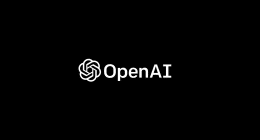Google’s DeepMind research team has already tested and proved their might by defeating the world champion Lee Sodol at one of the toughest games in human history – Go. This achievement was seen as the greatest feat of artificial intelligence in the present generation. But, Google now wants to take the challenge a step further and is gearing up to use its deep neural networks to play a high-level strategy game Starcraft II.
Google(or Alphabet’s) DeepMind research division is focused on pushing the boundaries of AI to enable it to solve any complex problem, without the need of being told how to. Thus, the team has today announced its collaboration with Blizzard to extend the scope of its neural networks to widely popular strategy game Starcraft II. It then wants to open this AI platform to researchers and developers across the globe. Oriol Vinyals, a research scientist at Google DeepMind describes the need of porting their AI onto this extensively vast game as under:
Oriol Vinyals, a research scientist at Google DeepMind describes the need of porting their AI onto this extensively vast game as under:
StarCraft is an interesting testing environment for current AI research because it provides a useful bridge to the messiness of the real-world. The skills required for an agent to progress through the environment and play StarCraft well could ultimately transfer to real-world tasks.
What this means is that Google instead of developing an AI assistant that can learn to play this extensively messy game is integrating its technology to create an AI-friendly environment right within the game. It is also not keeping the platform restricted to a closed group but plans to make it available to all researchers next year.
The DeepMind team is currently also working closely with the Starcraft II team to develop a fresh new API to replace the scripted bots already present in the gaming interface. The new AI-powered bots will enable the computer to have more programmatic control of individual units and access to the full game state. Also, this is the same API that’ll be available to other for the development of advanced AIs for the platform.
We recognise the efforts of the developers and researchers from the Brood War community in recent years, and hope that this new, modern and flexible environment – supported directly by the team at Blizzard – will be widely used to advance the state-of-the-art,
states the official blog post.
In addition, Google mentions that the ultimate goal of the platform is to enable the neural networks to recognize and play using the pixels rendered via the game. To make it possible, the DeepMind team has already developed a new feature layer API to display an image-based interface that outputs a simplified low-resolution RGB image data from the Starcraft map.This collected data can then be broken down into separate layers such as terrain heightfield, unit type, unit health etc. to understand the position of platoons in real-time. You can watch the attached YouTube video to get a better sense of the same:
Even if this extensive exercise doesn’t lead to Google’s DeepMind neural networks learning how to strategize and play the game, it could still lead to some significant improvements to the AI coaches and bots present within Starcraft II. Also, Google believes that these efforts could well beyond the scope of the game and apply to real world situations as well.
On a broader scope, these advancements we make in Starcraft might help us when we apply them to the real world challenges we face in science, energy, and other human endeavors,
adds Vinyals in the blog post.
With this collaboration, Google has taken to achieve a surmountable task of adding the knowledge of a complete real-time strategy game to an AI with the help of neural networks. This could possibly lead to the development of even advanced neural networks and AI trainers for coaching coded players in the games.
Google has ultimately also mentioned that they are at early stages of research and their AI is a long way from being able to challenge a professional human player to a game of Starcraft II. But it will be impressive to one day see this powerful AI really compete against a Starcraft II eSports champion team.
The Tech Portal is published by Blue Box Media Private Limited. Our investors have no influence over our reporting. Read our full Ownership and Funding Disclosure →






